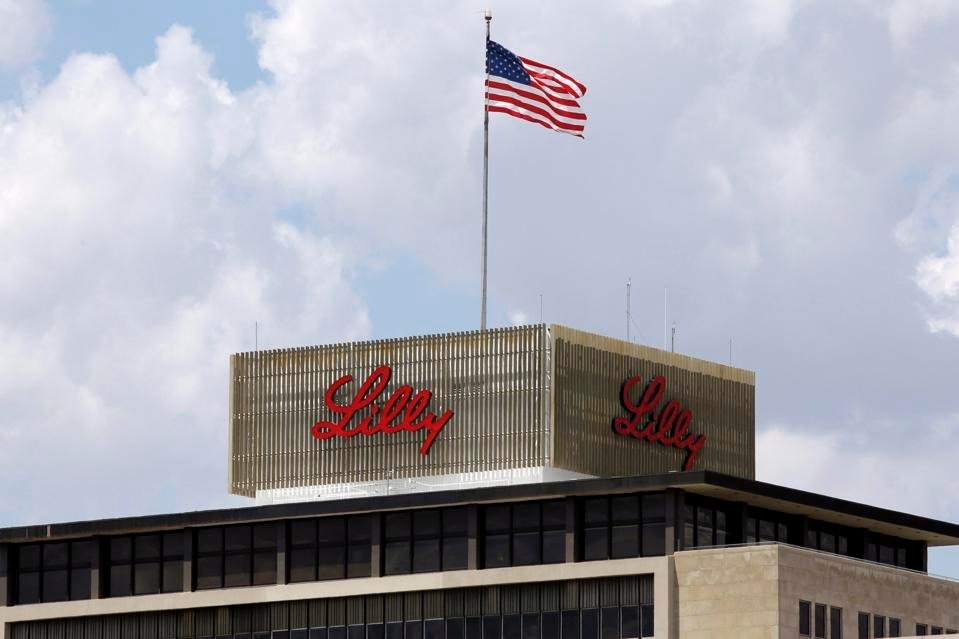From life-saving insulin to cutting-edge Alzheimer’s treatments—Eli Lilly is not just a pharmaceutical company, it’s a global force transforming modern healthcare. But how did it all begin? And what makes Eli Lilly one of the most influential drug makers in the world today? Let’s dive into the story of innovation, impact, and the future of medicine.”
Founded in 1876 by Colonel Eli Lilly, a Civil War veteran and pharmacist, the company was built on one simple yet groundbreaking principle: to manufacture high-quality medicines that actually worked. At the time, this was more than just a business idea—it was a radical stance against the chaos and danger of 19th-century medicine.” In the mid-1800s, the American pharmaceutical landscape was like the Wild West. Medicines were unregulated, and anyone could mix up and sell so-called “cures” with no scientific proof or oversight. Many of these so-called remedies were, in reality, dangerous concoctions—filled with alcohol, mercury, opium, or even arsenic. People bought them in desperation, and more often than not, these remedies did more harm than good. Eli Lilly, who had seen the horrors of battlefield medicine during the Civil War, was deeply disturbed by this. He witnessed firsthand how the lack of reliable medicine could lead to unnecessary suffering and death. After the war, he returned to his roots as a trained pharmacist and resolved to bring order, science, and ethics into medicine manufacturing.
With just $1,400 in start-up capital and a small rented facility in Indianapolis, Indiana, Lilly launched his company in 1876. His goal was simple but revolutionary for the time: produce medicines with consistent quality, clearly labeled ingredients, and tested effectiveness. He insisted on using only the best ingredients and introduced rigorous quality control procedures—a novel concept in an era when “cure-alls” were sold without question. One of Lilly’s earliest breakthroughs came with gelatin-coated pills. While it seems like a small innovation today, back then it was a game-changer. Most medicines were sold as bitter powders or foul-tasting liquids. Lilly’s coated pills were easier to swallow and had accurate dosages, making treatment more effective and safer for patients. Word of his integrity and effective medicines spread quickly, and so did his business. Within a few years, Eli Lilly & Co. was producing hundreds of medications, employing dozens of people, and establishing a gold standard for pharmaceutical manufacturing.
But Colonel Lilly’s influence extended beyond chemistry and commerce. He pushed for transparency in labeling, helped lay the groundwork for what would become the U.S. Food and Drug Administration (FDA), and trained a generation of pharmacists who embraced scientific rigor over snake oil salesmanship.Colonel Lilly didn’t just create a pharmaceutical company—he led a movement. At a time when public trust in medicine was shaky at best, he planted the seeds for a new era of credibility, accountability, and care in healthcare. More than a century later, that founding mission—of producing medicine that truly helps people—still echoes through the halls of Eli Lilly & Co.
As the 20th century dawned, the medical field was undergoing a seismic shift. Germ theory was gaining ground. Chemistry was evolving. And the world was beginning to recognize that disease could be treated—and even prevented—through science. Eli Lilly & Co. stood at the forefront of this revolution. After Colonel Eli Lilly’s death in 1898, leadership passed to his son, Josiah K. Lilly Sr., and later to his grandson, Josiah K. Lilly Jr. Rather than simply continuing the business, the new generation expanded it with bold ambition. They invested heavily in scientific research, creating some of the industry’s first fully staffed in-house research laboratories. At a time when many drug companies still relied on empirical formulas and tradition, Lilly placed its faith in controlled studies, chemical synthesis, and the scientific method. This shift set the company apart and allowed it to tackle more complex medical challenges. But the biggest turning point came in the 1920s—with a discovery that would not only transform Eli Lilly but change medicine forever.
In 1921, researchers Frederick Banting and Charles Best at the University of Toronto discovered how to extract insulin to treat diabetes, which until then had been a fatal diagnosis. The breakthrough was extraordinary—but production was the problem. They couldn’t scale it up. The company partnered with the researchers and within a year, it developed the first commercial insulin product: Iletin. Through an intensive industrial effort, Lilly managed to purify and mass-produce insulin, transforming it from a laboratory miracle into a globally accessible treatment. This moment wasn’t just a milestone for Eli Lilly. It was the beginning of modern biotechnology—applying scientific innovation to mass-produce life-saving medicine. Insulin not only made Eli Lilly a household name, but it also proved that the company could turn laboratory science into practical, global solutions.
By the end of the war, Eli Lilly had grown into one of the largest and most respected pharmaceutical firms in the world. By the late 1950s, Eli Lilly was no longer just an American company. It had opened offices and production facilities in Europe, Latin America, and Asia. Its medicines were being used on nearly every continent, and its research was helping tackle global health issues from tuberculosis to mental illness. What started as one man’s ethical stand in 1876 had become a multinational institution influencing the health of millions.
The mid-to-late 20th century brought a shift in global health priorities. While infectious diseases were still a threat, new focus was placed on mental health, chronic illness, and quality of life. Eli Lilly once again positioned itself at the center of this transformation, entering new frontiers in neuroscience and biotechnology. In the 1960s and ’70s, awareness of mental health disorders—particularly depression and anxiety—began to rise. For decades, treatments for these conditions had been limited, often involving sedatives or medications with severe side effects. The stigma around mental illness remained strong, and many suffered in silence. Eli Lilly’s scientists, recognizing the unmet need and opportunity, began extensive research into psychopharmacology. What they discovered would not only change the company but reshape how the world viewed—and treated—depression. In 1987, Eli Lilly introduced fluoxetine hydrochloride, better known by its brand name: Prozac. This wasn’t just a new drug—it was a paradigm shift. As the first selective serotonin reuptake inhibitor (SSRI), Prozac treated depression by helping regulate serotonin levels in the brain with fewer side effects than older antidepressants. It quickly became one of the most prescribed psychiatric medications in history. But Prozac wasn’t just a medical success—it became a cultural icon. Featured in headlines, novels, and even pop songs, it symbolized a new openness about mental health, while also drawing criticism for the commercialization of psychiatric care. Regardless of the debates, one thing was clear: Eli Lilly had transformed the landscape of mental health treatment, giving hope to millions who had previously suffered in silence.
Building on the momentum of Prozac, Eli Lilly continued to expand its research pipeline into other areas:
- Zyprexa (olanzapine) – Introduced in the 1990s for schizophrenia and bipolar disorder, this became another blockbuster drug, used globally to treat severe mental illness.
- Evista (raloxifene) – Developed for osteoporosis in postmenopausal women, marking a strategic entry into women’s health.
- Gemzar (gemcitabine) – A chemotherapy agent used to treat several types of cancer, including pancreatic and lung cancer.
This period was characterized by broad diversification, as the company focused on cancer, immunology, endocrinology, and neurological disorders—all while maintaining its leadership in diabetes treatment.
In parallel with drug development, Eli Lilly began making major investments in biotechnology, sensing a fundamental shift in how medicine would be made and delivered.
The company was an early pioneer in recombinant DNA technology. In 1982, it became the first to bring genetically engineered insulin to market—Humulin—a product made not from animals, but using modified bacteria to produce human insulin. This was one of the first true biotech drugs approved by the FDA. This innovation was groundbreaking—it opened the door for safer, more consistent insulin and laid the foundation for countless biologic therapies that would follow across the industry.
Lilly didn’t just ride the biotech wave—it helped create it.In parallel with drug development, Eli Lilly began making major investments in biotechnology, sensing a fundamental shift in how medicine would be made and delivered. The company was an early pioneer in recombinant DNA technology. In 1982, it became the first to bring genetically engineered insulin to market—Humulin—a product made not from animals, but using modified bacteria to produce human insulin. This was one of the first true biotech drugs approved by the FDA. This innovation was groundbreaking—it opened the door for safer, more consistent insulin and laid the foundation for countless biologic therapies that would follow across the industry. Lilly didn’t just ride the biotech wave—it helped create it.
With rapid growth came greater scrutiny. During the 1990s and 2000s, Lilly faced several legal and ethical challenges, including:
- Pricing controversies, particularly around Zyprexa and insulin
- Marketing practices that drew regulatory fines
- Concerns over side effects and drug safety transparency
These issues sparked global debates over the balance between innovation, profit, and public health responsibility—discussions still ongoing today. Despite the controversies, Eli Lilly maintained its reputation as a company grounded in science and purpose. It responded by increasing investment in drug safety, clinical transparency, and corporate social responsibility.
As the new millennium approached, Eli Lilly faced increasing pressure from patent expirations and rising competition from generics. But instead of retreating, the company focused on strategic partnerships, acquisitions, and reinvestment into research. By 2009, it had reorganized its R&D model, focusing on targeted innovation in fields like:
- Diabetes and endocrinology
- Neuroscience
- Oncology
- Autoimmune diseases
Lilly’s commitment to scientific excellence continued, but with a sharper lens on precision medicine, biologics, and global access. The Prozac era defined Eli Lilly not just as a pharmaceutical manufacturer but as a social force—a company that helped break down stigma, deliver hope, and push the limits of what medicine could do for the mind and body. It marked the transition from old-guard pharma to modern, research-driven, innovation-centric biomedicine.
As the 2010s unfolded, Eli Lilly found itself at a crossroads. With several major patents expiring and increased competition from generics, the pressure was on to reinvent and reinvigorate its pipeline. But rather than play it safe, the company made daring bets in metabolic diseases, neurology, and cutting-edge biotechnology—and those bets began to pay off. Perhaps no recent development has defined Eli Lilly’s resurgence more than its work on GLP-1 receptor agonists—a class of drugs that mimics gut hormones to regulate blood sugar and appetite.
In 2022, Eli Lilly released Mounjaro (tirzepatide), a Type 2 diabetes treatment with stunning clinical results. But what took the world by storm was its unprecedented weight-loss effects. Patients were losing an average of 20–25% of their body weight, far exceeding previous drugs. Mounjaro didn’t just become a diabetes treatment—it became a cultural phenomenon, widely discussed as a game-changer in the global fight against obesity. Then came Zepbound, the rebranded version of tirzepatide specifically for chronic weight management. With rising global obesity rates
With rising global obesity rates—affecting over 650 million people worldwide—Zepbound arrived at a critical time. The demand was overwhelming. Within months of its launch in late 2023, it became one of the most sought-after drugs in the world. Unlike many weight-loss treatments of the past, Zepbound not only helped people shed significant pounds, but also improved key metabolic health markers, reducing risks for heart disease, Type 2 diabetes, and certain cancers.
Eli Lilly didn’t just launch a drug—it disrupted an entire industry. Analysts began comparing the impact of GLP-1 therapies to the statin revolution of the 1990s. And with projected revenues soaring into the tens of billions, Lilly firmly reestablished itself at the forefront of the pharmaceutical world. But Lilly’s ambitions go beyond metabolic diseases. For decades, the company has been investing in Alzheimer’s research, despite repeated scientific failures and setbacks—a testament to its long-term commitment to solving humanity’s hardest medical puzzles. That persistence paid off in 2023 with the release of Donanemab, a monoclonal antibody drug that showed significant ability to slow the progression of early Alzheimer’s disease. The trials didn’t promise a cure—but they offered hope. For the first time, there was a treatment that could meaningfully delay cognitive decline, giving patients and families precious time. This wasn’t just a medical milestone—it was an emotional one. Alzheimer’s affects over 55 million people globally, and the lack of effective treatment has long been a source of despair. Donanemab marked a shift: the beginning of the era where Alzheimer’s could be managed—not just endured.
As of the 2020s, Eli Lilly isn’t just a pharmaceutical company—it’s becoming a biotechnology and data-driven health innovator.
The company is now investing heavily in:
- Precision medicine: Creating drugs tailored to a patient’s genetics, lifestyle, and biology.
- Artificial intelligence: Collaborating with AI firms to discover new drug molecules faster and more accurately.
- Gene therapy and RNA science: Exploring next-gen platforms that could treat rare diseases, cancers, and immune conditions at their root cause.
- Digital health: Integrating apps and monitoring tools with medications to enhance treatment outcomes.
In 2023, Lilly announced plans to build new manufacturing sites in Indiana and North Carolina, signaling its readiness to scale up production for its new class of therapies, particularly GLP-1 drugs like Zepbound.
Historically criticized for drug pricing—especially regarding insulin—Eli Lilly made a major move in 2023 by announcing a cap on insulin prices at $35/month for all patients in the U.S. It was a direct response to public pressure and reflected a broader shift in Lilly’s public image strategy: be seen as a company that listens, adapts, and leads responsibly. This move gained praise across the political spectrum and signaled a new era of patient-centric focus in big pharma. Eli Lilly is experiencing significant developments across various facets of its operations:
Eli Lilly has projected robust financial growth for 2025, anticipating revenues between $58 billion and $61 billion. This represents a notable increase from the previous year’s revenue of approximately $45 billion, reflecting the company’s strong market position and successful product launches.
Product Developments and Approvals
- Cardiovascular Innovations: In March 2025, Eli Lilly announced positive Phase 2 results for lepodisiran, an experimental drug that significantly reduced lipoprotein(a) levels—a genetic risk factor for heart disease—by 93.9% compared to placebo. These findings were presented at the American College of Cardiology meeting and published in The New England Journal of Medicine.
- Alzheimer’s Treatment Setback: The European Medicines Agency (EMA) declined approval for Eli Lilly’s Alzheimer’s drug, Kisunla (donanemab), citing concerns over serious side effects such as brain swelling and bleeding. Despite approvals in the U.S., Japan, and China, the EMA concluded that the benefits did not outweigh the risks. Eli Lilly intends to engage with the EMA for potential re-evaluation.
Eli Lilly has initiated lawsuits against two compounding pharmacies, Strive Pharmacy LLC and Empower Clinic Services LLC, for selling unapproved products containing tirzepatide—the active ingredient in Lilly’s weight-loss and diabetes medications. This legal action follows a federal judge’s decision restricting the mass compounding of these drugs unless there is an FDA-declared shortage.
With a robust pipeline, deep R&D investment, and leadership in the obesity, diabetes, and neurology sectors, Eli Lilly is poised to be one of the defining healthcare companies of the 21st century.
Some of its most anticipated developments include:
- Next-gen GLP-1 drugs with even better efficacy and fewer side effects
- Alzheimer’s combination therapies for earlier and more sustained treatment
- New cancer immunotherapies aimed at hard-to-treat solid tumors
- Global expansion, especially in low- and middle-income countries where chronic disease is rising
From its origins in 1876 as a one-man pharmacy to becoming a global leader in biotechnology and health innovation, Eli Lilly’s journey is a story of science, ethics, reinvention, and relentless pursuit of progress. Where some pharmaceutical companies rely solely on legacy products or aggressive marketing, Lilly’s strength lies in doing the hard science, taking risks, and being willing to fail in order to ultimately succeed. Its story continues to evolve—but one thing is clear: whether it’s insulin in the 1920s, Prozac in the 1980s, or Zepbound and Donanemab today, Eli Lilly has never stopped striving to change what medicine can do.



